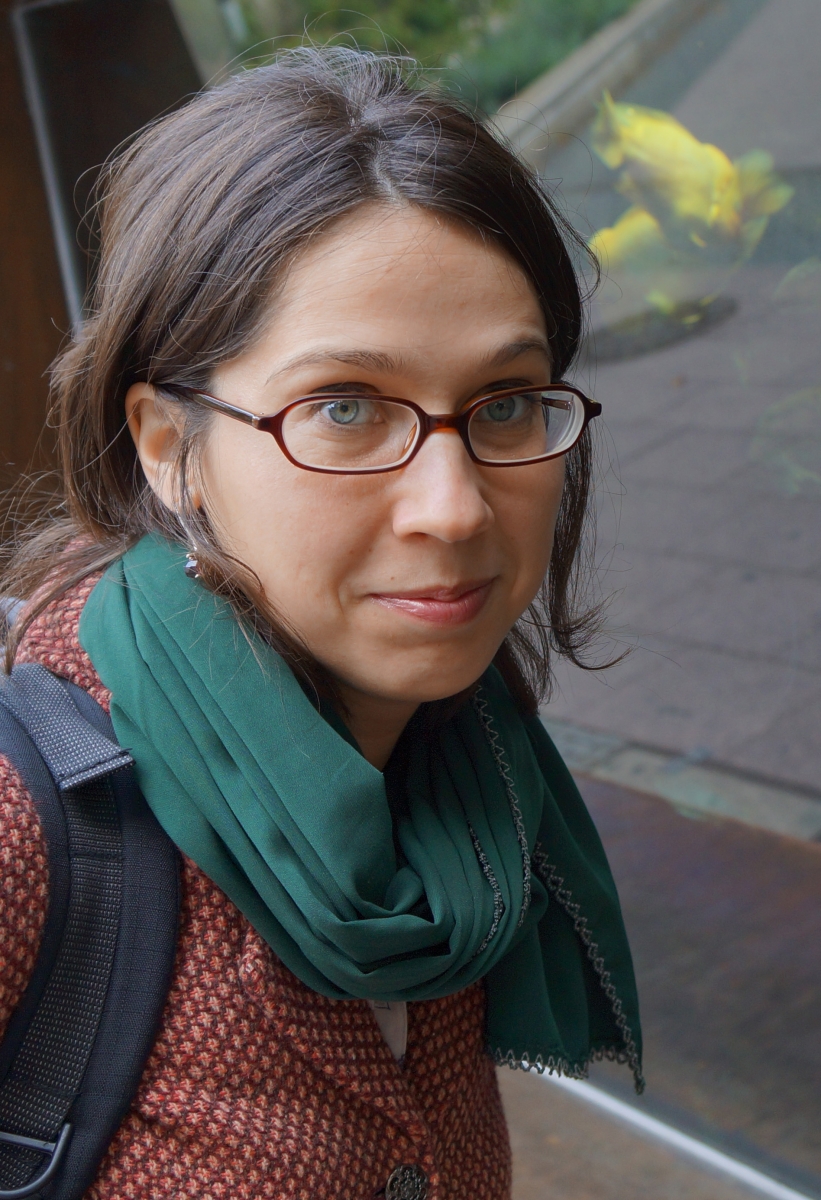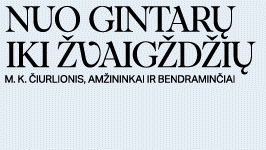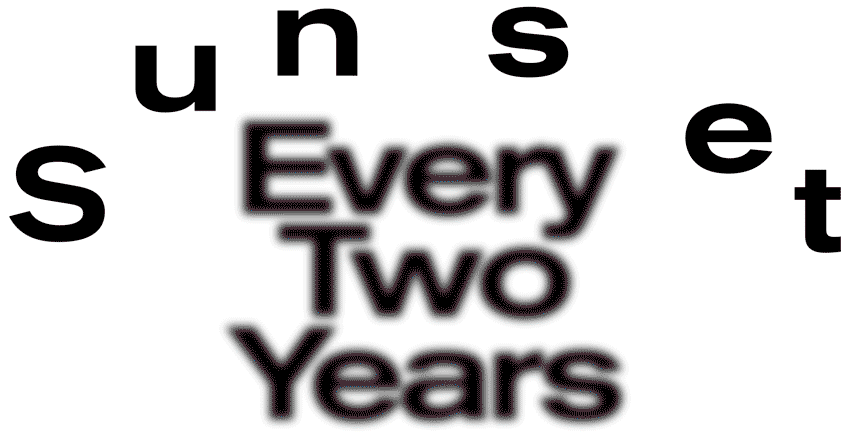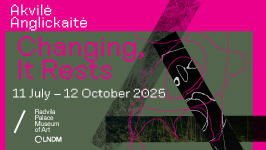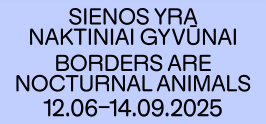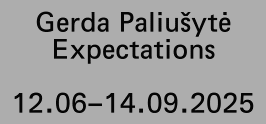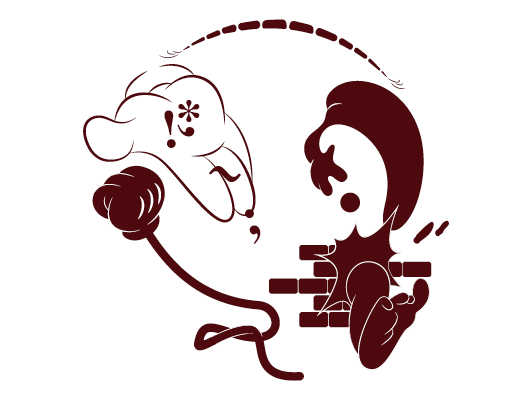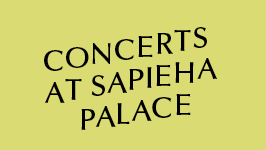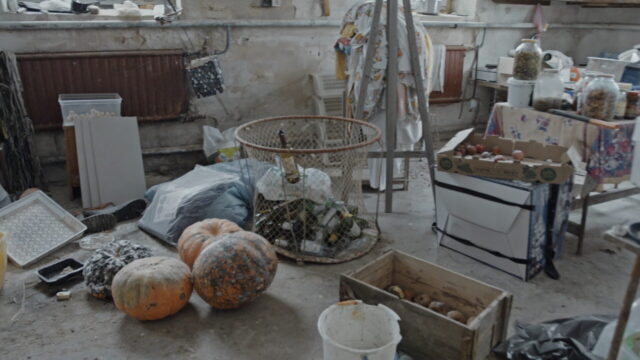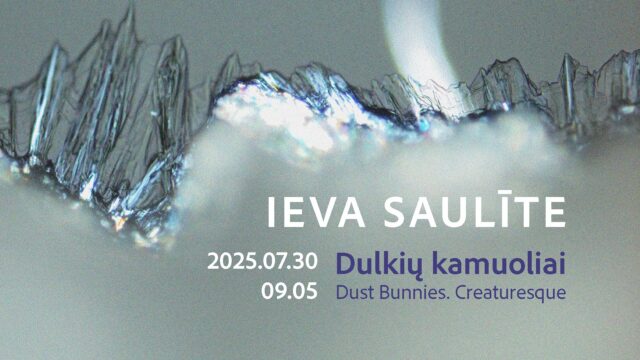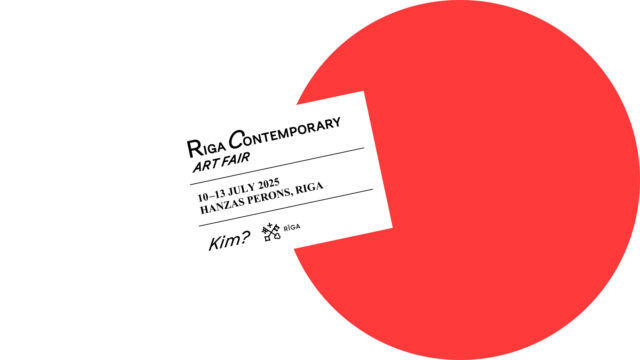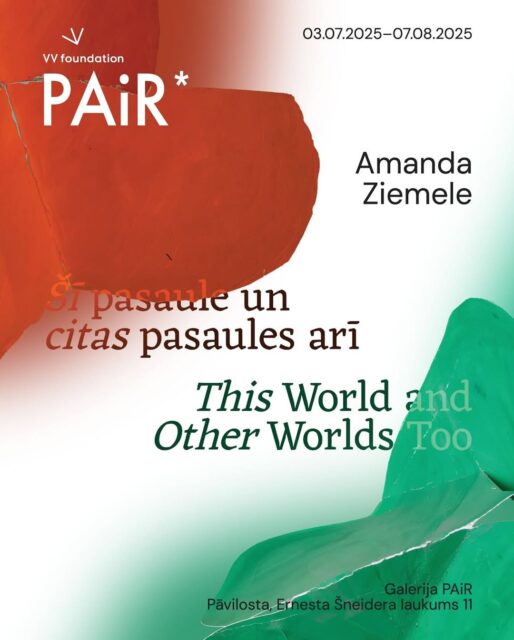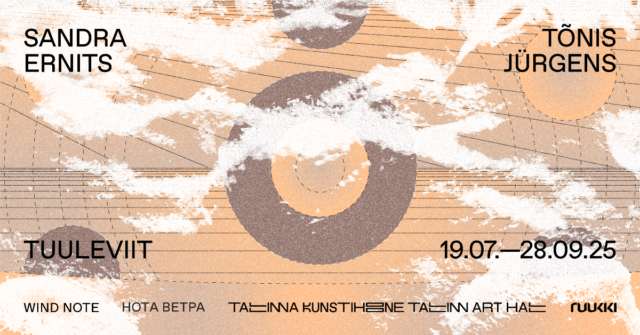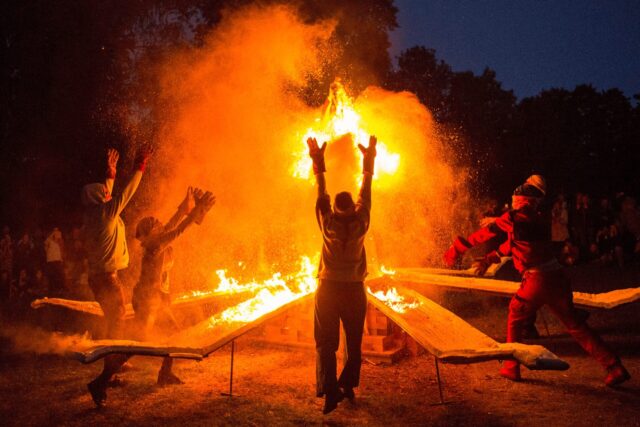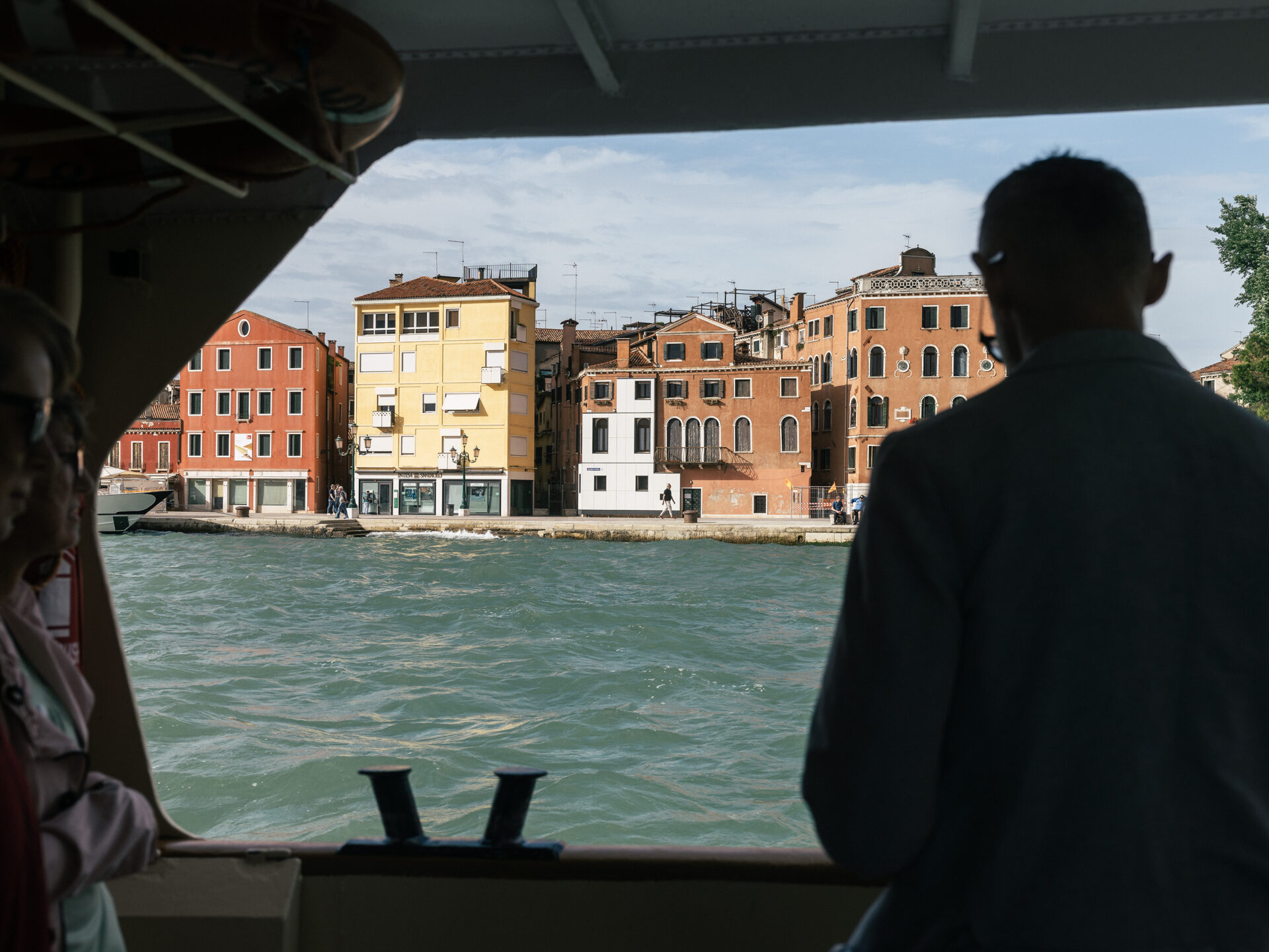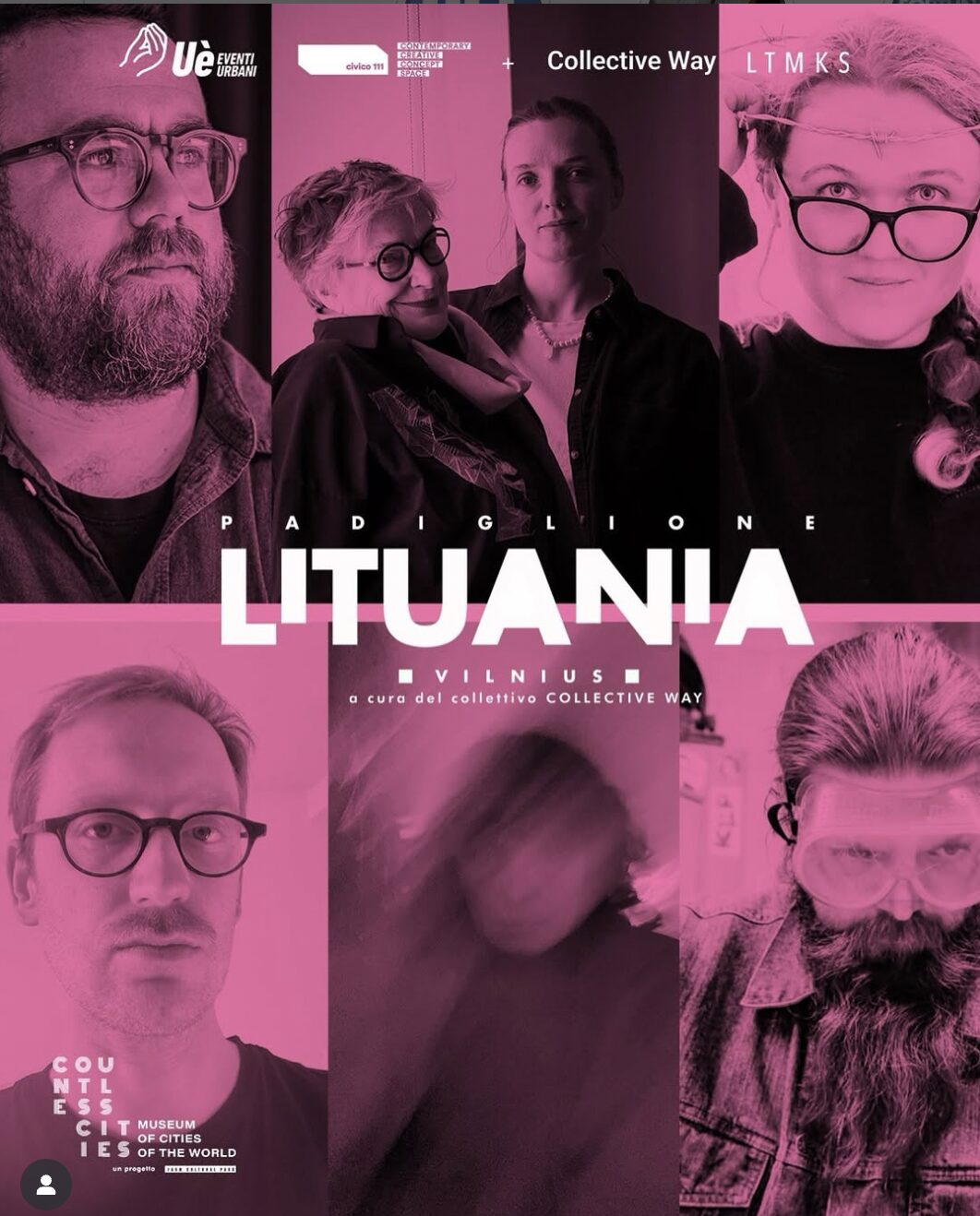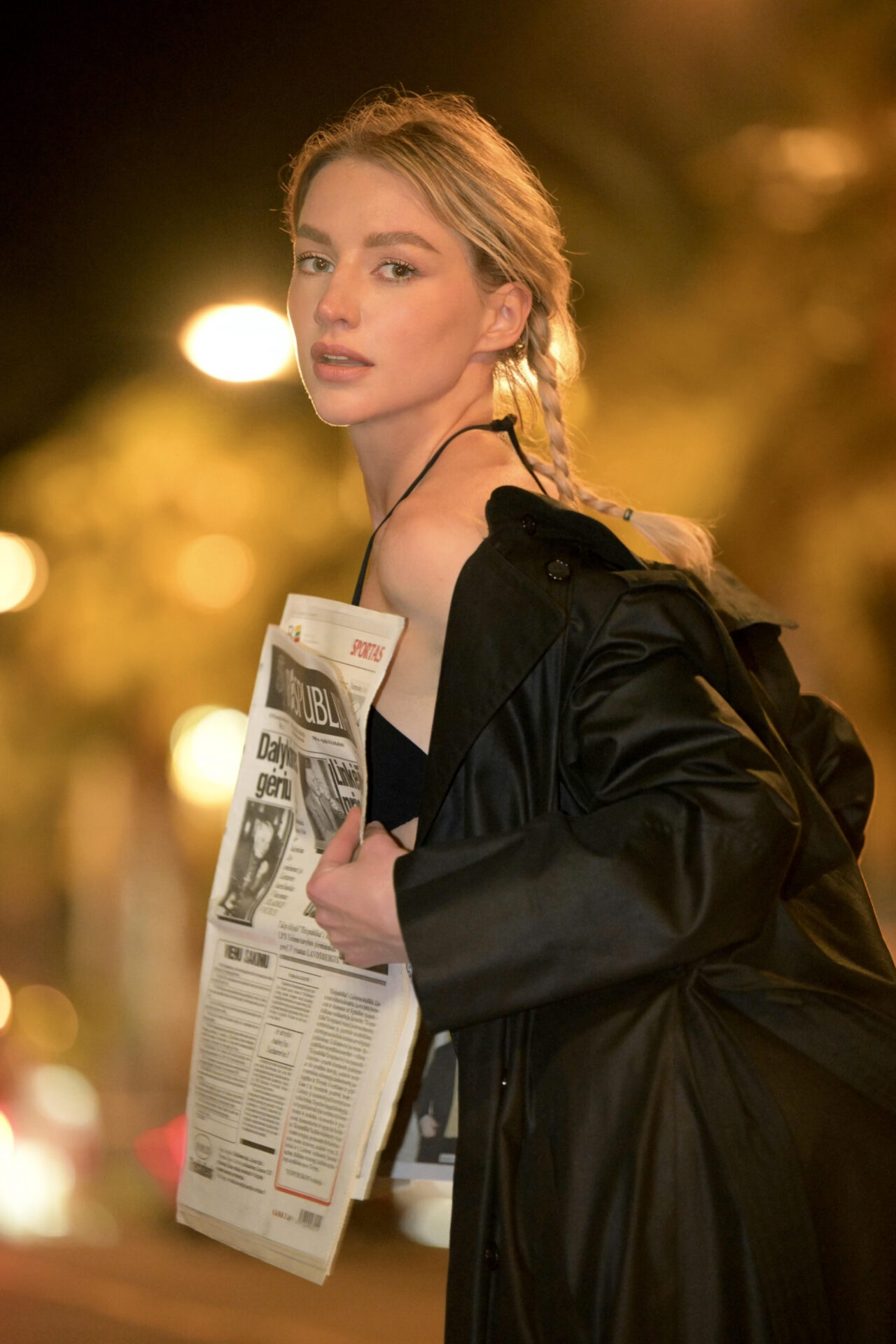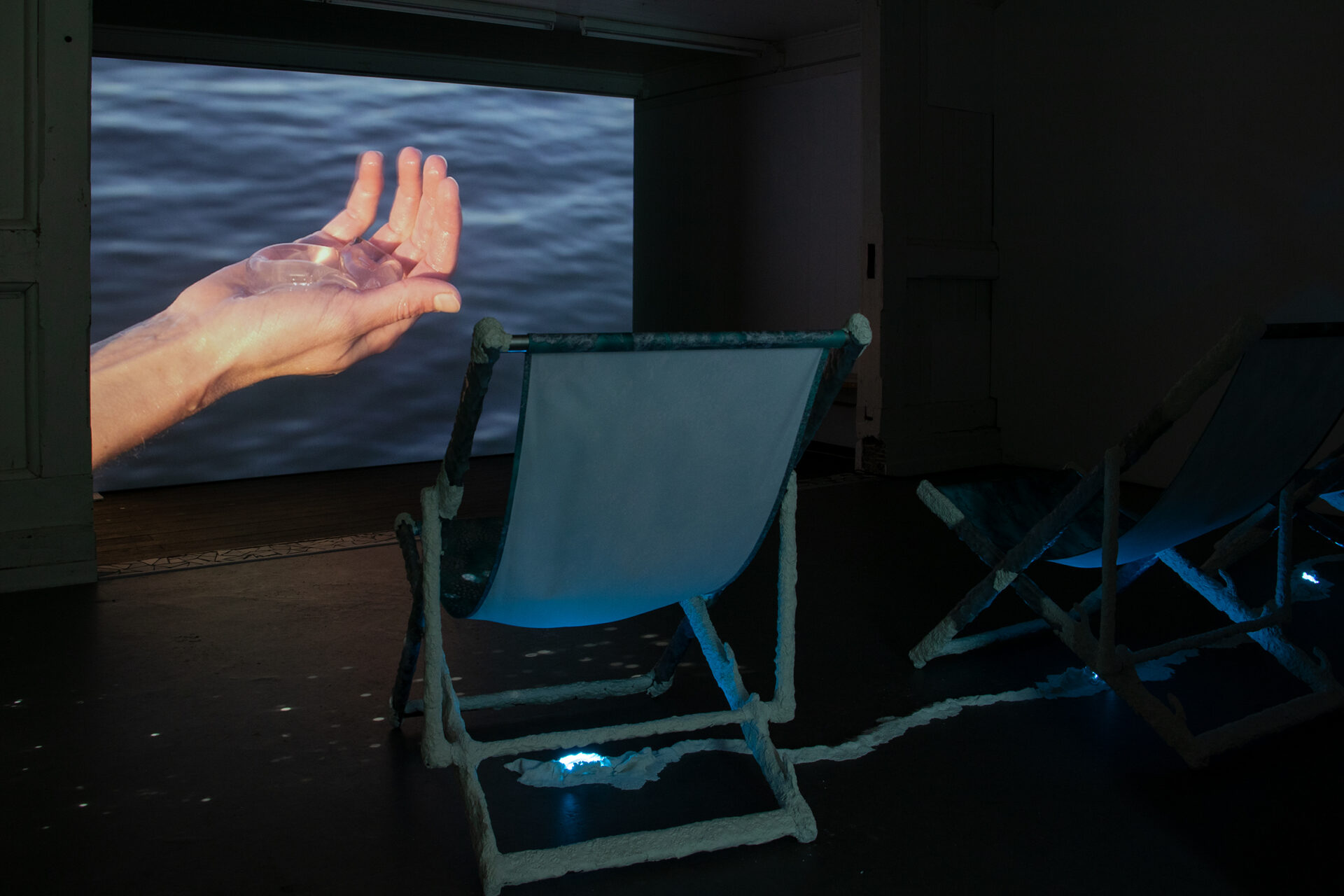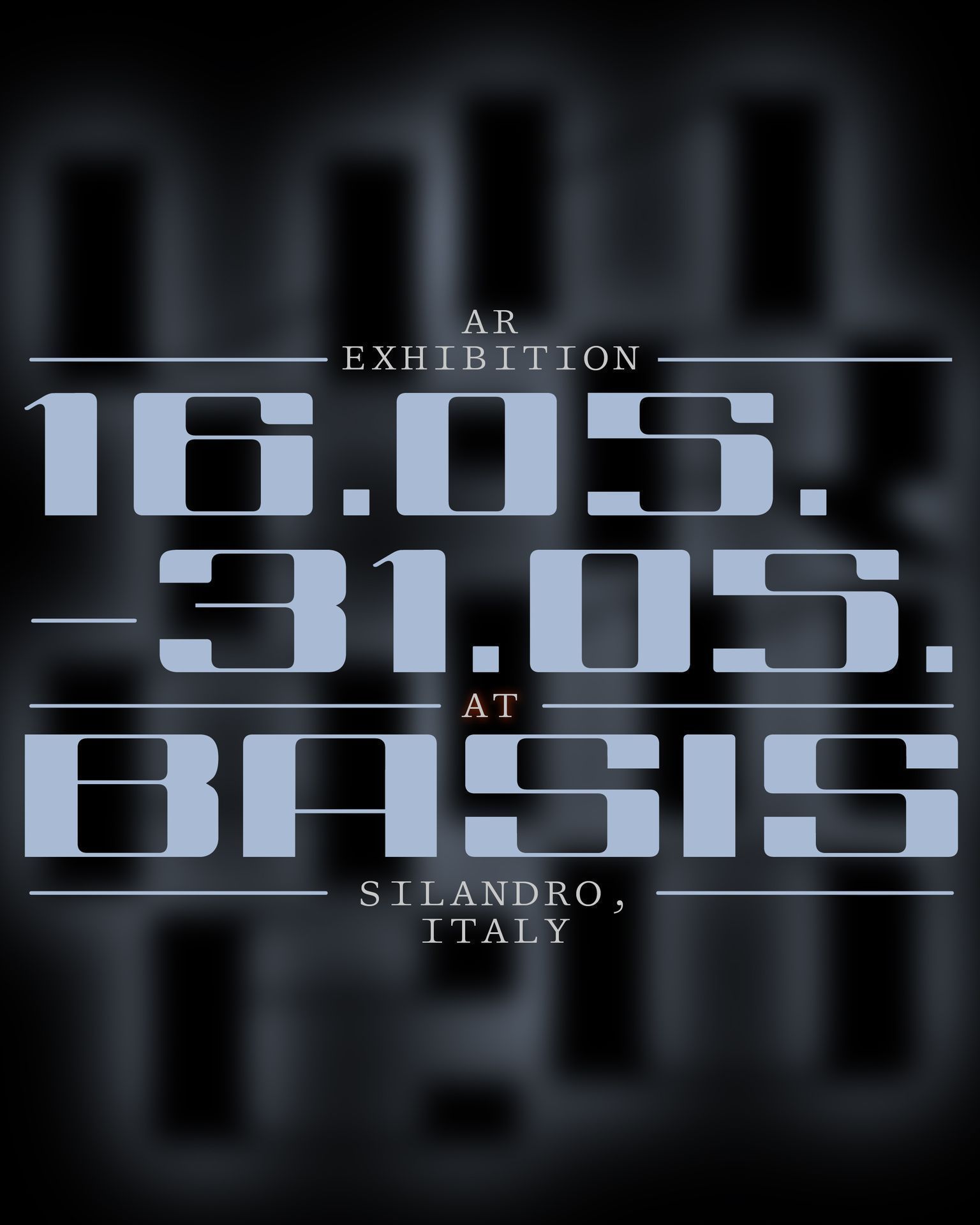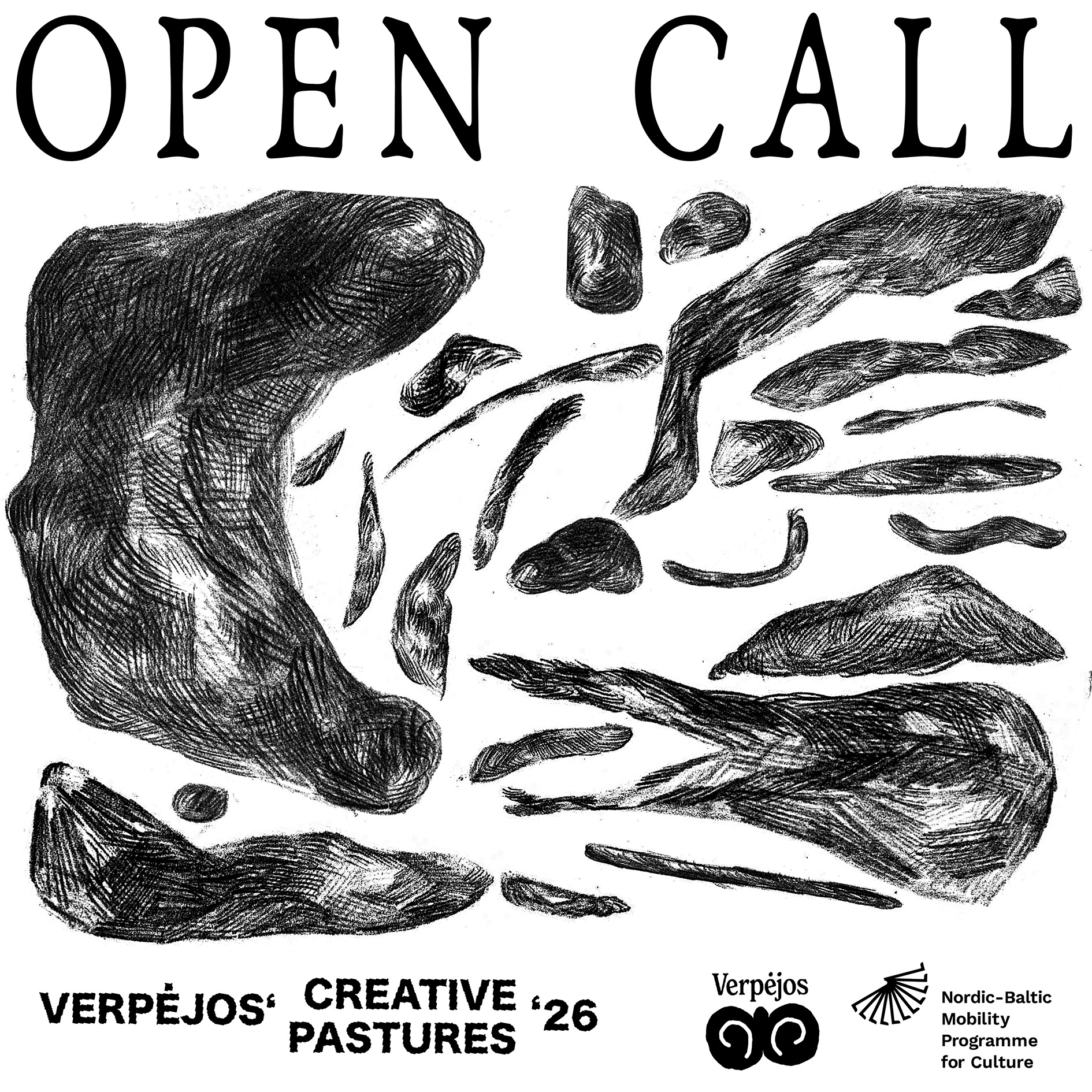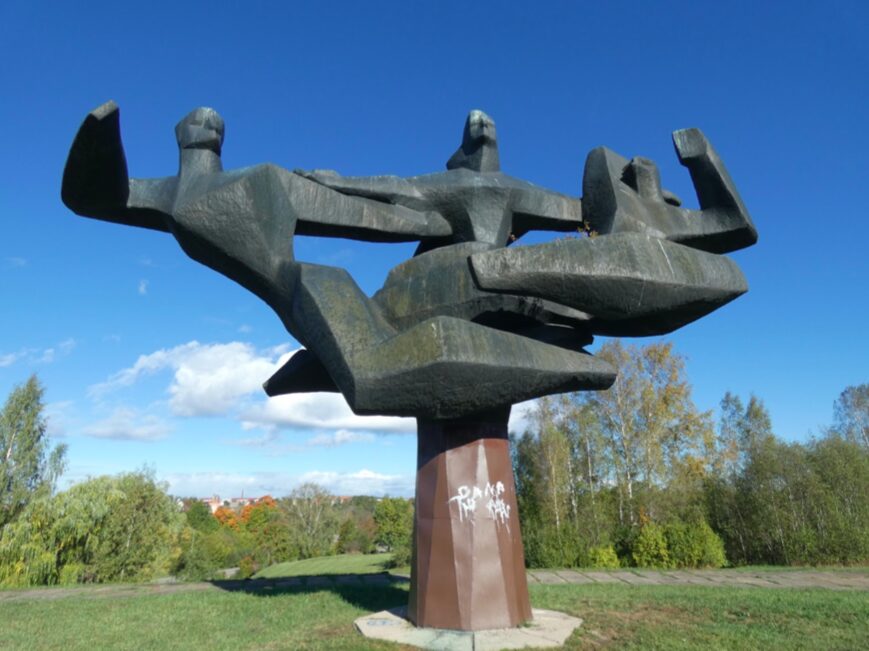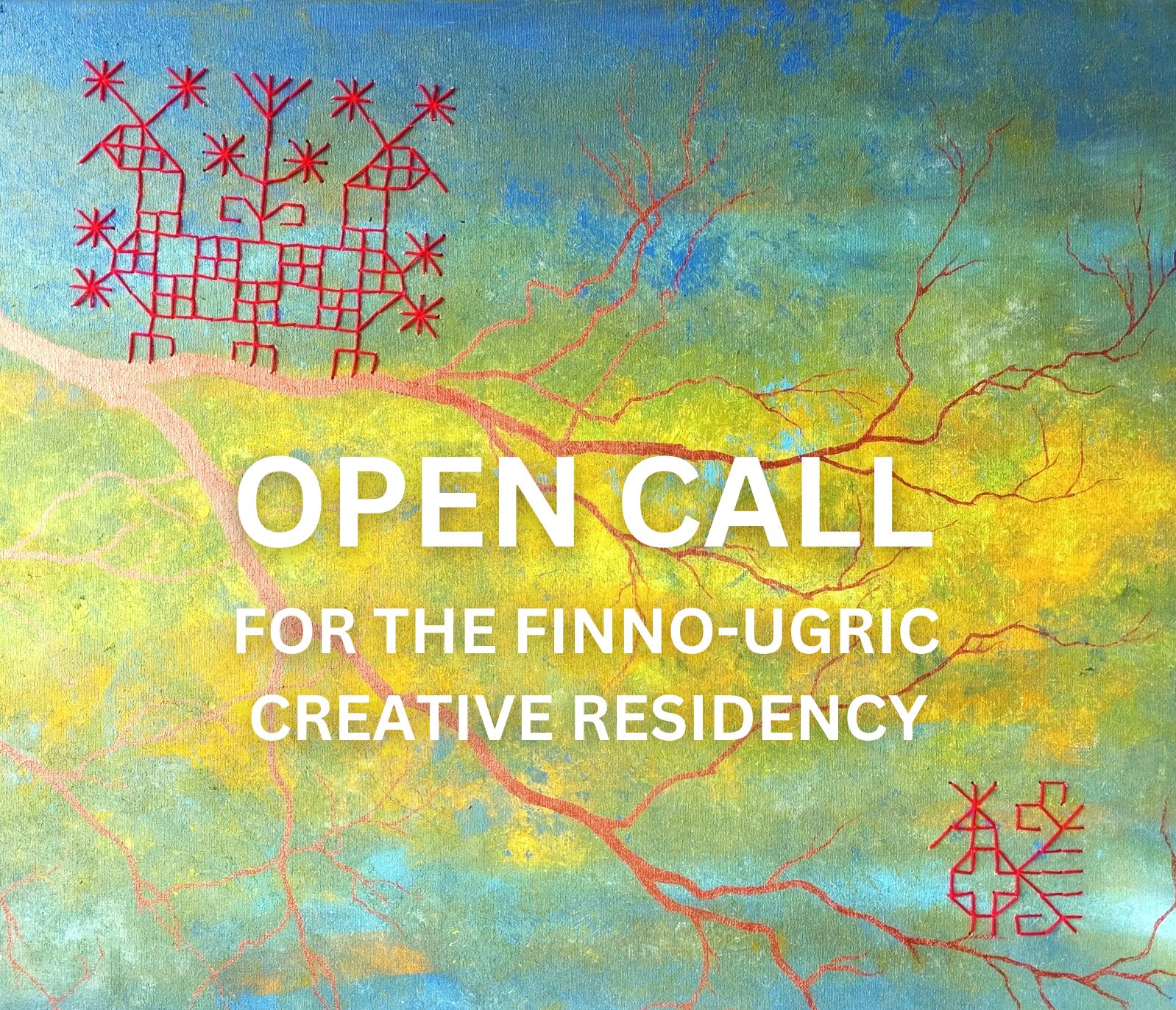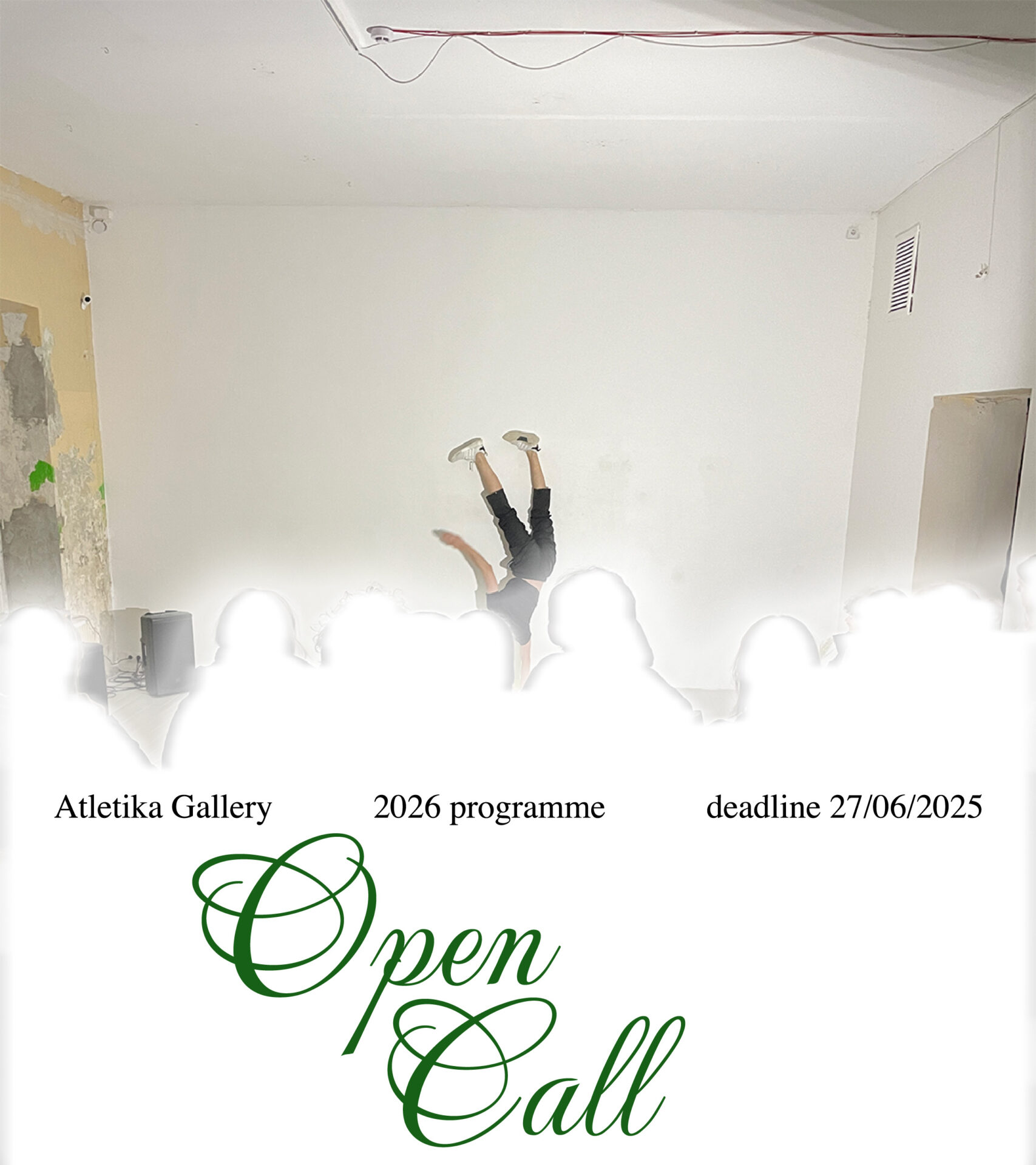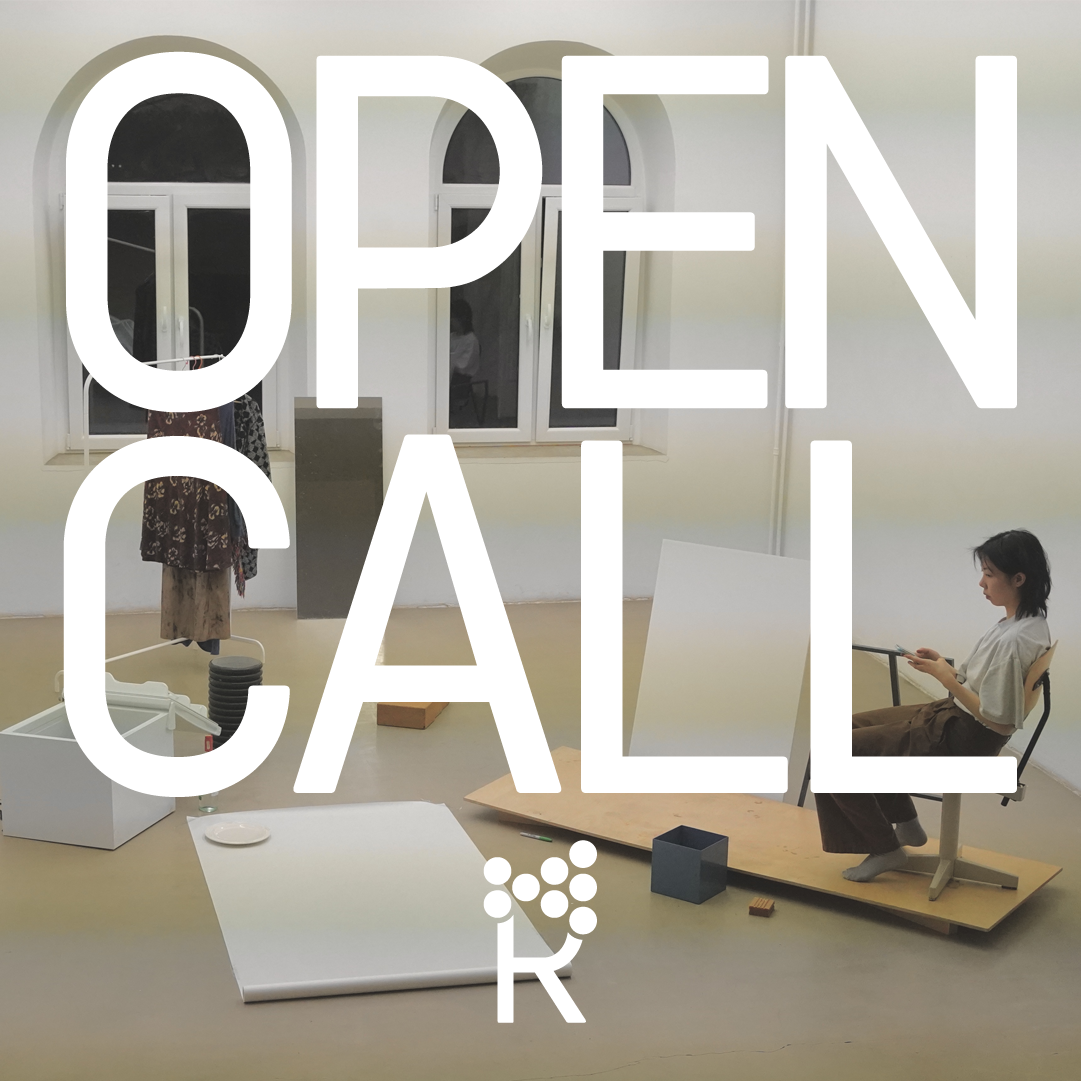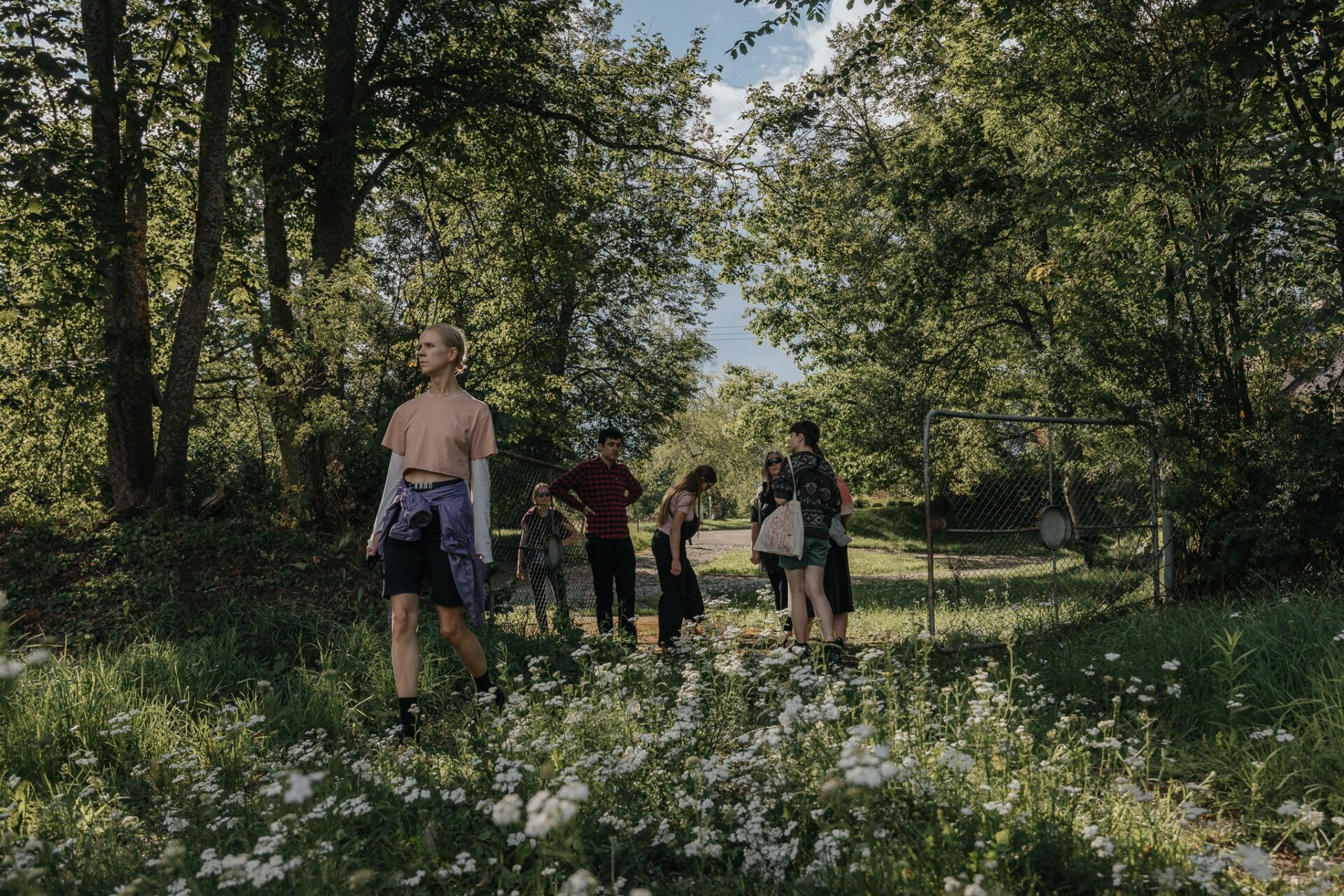Without planning it, we finished this conversation at the beginning of the summer season, when Klaipėda becomes one of the most visited cities in Lithuania. This can be taken as an invitation to visit not only the banks of the Danė, or the sandy beaches, but also the Pranas Domšaitis Gallery, a branch of the Lithuanian National Art Museum, located in the centre of Klaipėda. For several years now the gallery has been managed by Skaistė Marčienė, the cultural manager and a co-owner of the non-commercial gallery Si:said. In this interview, I asked how the gallery has changed over the last few years since she took up her new position. And although Skaistė views the changes with caution, the gallery space has been renewed, the exhibitions have become more diverse, and the educational programmes are oriented to an increasingly wider circle of visitors.
Agnė Sadauskaitė: Skaistė, tell us how you got into the field of art management.
Skaistė Marčienė: After studying at Klaipėda University, I got a job at the Klaipėda Cultural Communication Center (KKKC). It could be said that I started my career as a cultural manager: I consolidated my practical experience and based it on theory, or vice versa, because I have an MA in cultural management and cultural policy from Vilnius Academy of Art. In 2013, while I was still at the KKKC, I founded the Si:said non-commercial gallery together with the artist Rolandas Marčius. We felt that such an art space was missing in Klaipėda, and we were interested in new art processes and their initiation in general. This year, the Si:said gallery will celebrate its tenth birthday. During this period, we have organised about a hundred events (exhibitions, educational sessions, publications, etc), and initiated new art festivals in Klaipėda: ‘Blue Lane’ (it actualised the city’s ecology through art forms, 2020‒2021, 2016‒2017), and ‘Gallery Days’ (more commonly called ‘Gallery Weekend’ 2015‒2017). Since the activity of the gallery is based on social foundations, we worked in parallel ‘services’, and invested the rest of our time, energy and money in the field of visual arts in the port city. Returning to my work experience, for five years I curated the residency programme at Vilnius Art Academy’s Nida Art Colony, and now I am here at the Lithuanian National Art Museum’s Pranas Domšaitis Gallery.
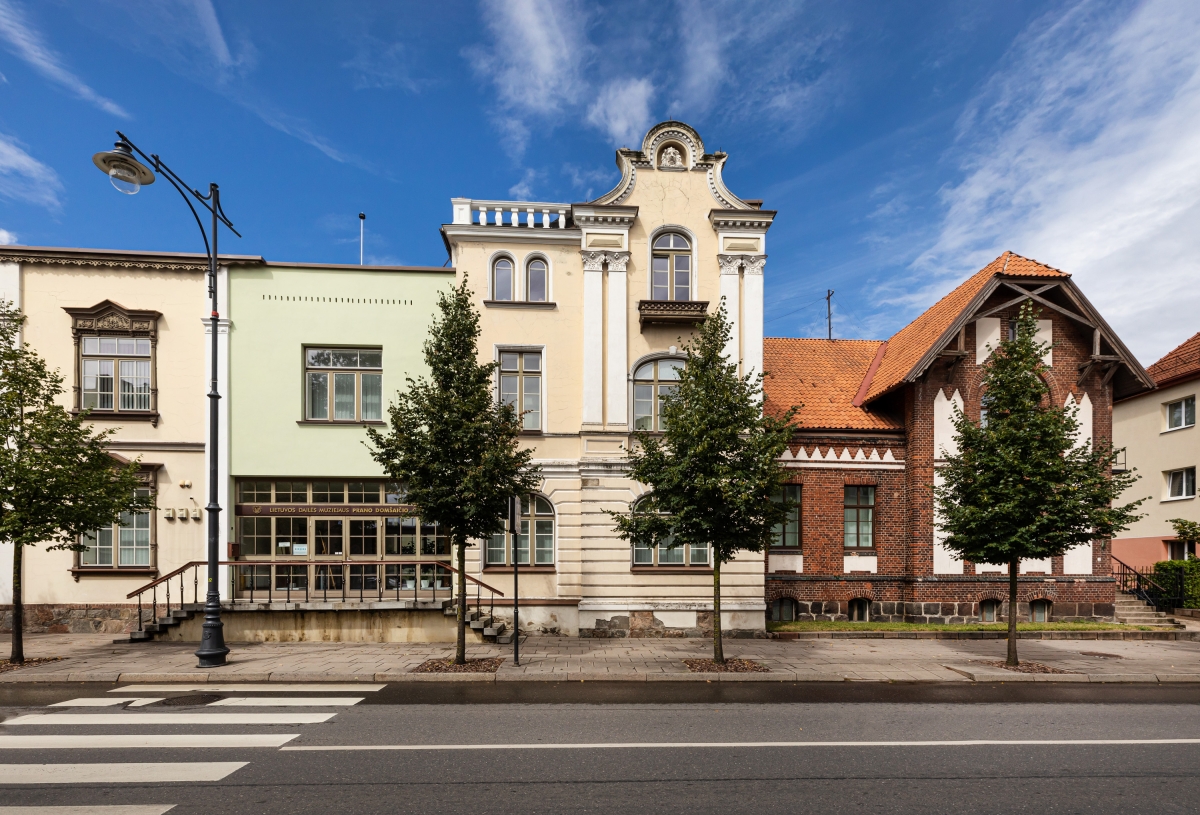
Pranas Domšaitis Gallery. Photo by Gintarė Grigėnaitė
AS: The Pranas Domšaitis Gallery opened in 1973 in the old town of Klaipėda. It is a space with a long history. What kind of gallery did you see as a visitor, and what did you find when you started as a director of the gallery in 2021?
SM: This year, the Pranas Domšaitis Gallery (PDG) is 50 years old. It is an important anniversary, and undoubtedly an important five decades for cultural life in the port city. The exhibition of work by the sculptor Dalia Matulaitė ‘Theme of the Motherland’ (curated by Ramutė Rachlevičiūtė) will run until the end of the summer. This exhibition has a thread that goes back to the museum’s beginnings. Matulaitė’s sculpture ‘Neringa’ (1972) was her first exhibition work after completing her studies. The wooden sculpture was admired by the then mayor of the city Alfonsas Žalys. It was brought and exhibited in the newly opened Klaipėda Picture Gallery (1973), and ten years later a bronze one was erected in the square by the Old Market (1976–1983). The work of all the directors is significant. It is probably important to mention separately the founder, the first one, the art critic and architectural historian Jonas Tatorius (1925‒2004). Thanks to them, the PDG is a rich, aesthetic and cultural space open to the community.
There was a time when cinemas were empty, and only a small group of people went to screenings. At that time, I was already working at the KKKC, and my colleagues nurtured the activities of the Kinopolis film club and organised non-commercial film screenings at the PDG. The preserved cinema is the most memorable.
AS: What changes do you think the gallery has undergone since the beginning of your leadership? What kind of gallery concept do you apply?
SM: It seems to me that nothing too much happened. We operated at a normal pace, only a little more varied. We moved the furniture in the lobby, took out some pieces, brought in others, and did this and that. To illustrate the vision of the museum, I will use the new definition of a museum formulated last year by the International Council of Museums (ICOM): ‘It is an institution open to the public, accessible, inclusive, cooperating with the public, which not only researches, collects, conserves, interprets and exhibits tangible and intangible heritage, but also operates, communicates ethically, professionally, and engages the community by offering diverse experiences for learning, enjoyment, reflection, and knowledge sharing.’ This is exactly the kind of place I aim to create for myself and the community.
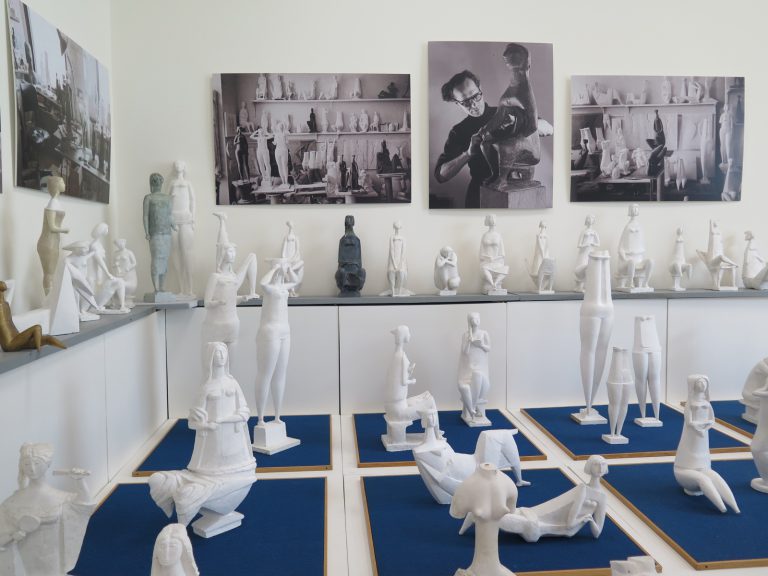
Vytauto Kašuba ‘Žmogaus misterija‘, Pranas Domšaitis Gallery. Photo by Gintarė Grigėnaitė
AS: When you started in the position, you mentioned that the permanent exhibition of work by Pranas Domšaitis will remain the core of the gallery, but contemporary art pieces from the collection of the Lithuanian National Art Museum will be presented as well. How do you choose which artists to present to gallery visitors?
SM: The PDG belongs to the rich and distinguished family of the Lithuanian National Art Museum (LNAM). It has full access to the works collected by the LNAM. We will transform the exhibition of Domšaitis’ work and adapt it for the modern visitor. We periodically invite the public to new temporary exhibitions. Two photography exhibitions by Alvydas Lukys ‘Not just Roots. Based on the Archive Collected by My Father Juozas Lukys in Siberia’, and ‘Ars Botanica’, and the exhibition ‘Stage Divas’ curated by the art critic Ramutė Rachlevičiūtė, are on show in the gallery at the moment. In the summer, we will present many new ones: a solo exhibition of work by Žilvinas Kempinas, and an exhibition of still-life paintings from the second half of the 20th century (curated by the art critic Nijolė Nevčesauskienė), and a bit later pieces from the Bohdan and Varvara Khanenko National Museum of Arts in Ukraine. In 2022, Ekkehard Hildebrandts donated paintings by K. Eulenstein (1892–1981), an Expressionist artist from Klaipėda, to the Lithuanian National Art Museum. In the autumn, it will be possible to see these works, and also some borrowed ones, by this artist. We also coordinate the activities of another department, the Pamario Gallery, which, admittedly, is very seasonal. Kostas Dereškevičius’ exhibition ‘Smiling’ (curated by Akvilė Anglickaitė) and Linas Jusionis’ ‘Step Counting’ will be on show from June to September. As you can see, our range is wide: the most important thing is quality and relevance.
AS: Since 1989, the Centre for Knowledge of Art has been operating in the gallery, where educational classes are held. Most are aimed at school-age visitors, but one of the goals is to broaden the age spectrum. In what ways and with what activities are you trying to attract older visitors?
SM: Yes, educational activities are very active and intensive. It is still taking place in the premises previously called the Centre for Knowledge of Art. The educational programme is more focused on pupils in educational institutions: kindergartens and schools. We are gradually expanding the age range of visitors, understanding their needs and fulfilling their wishes. Art studio classes for adults are taking place again; we pay more attention to families.
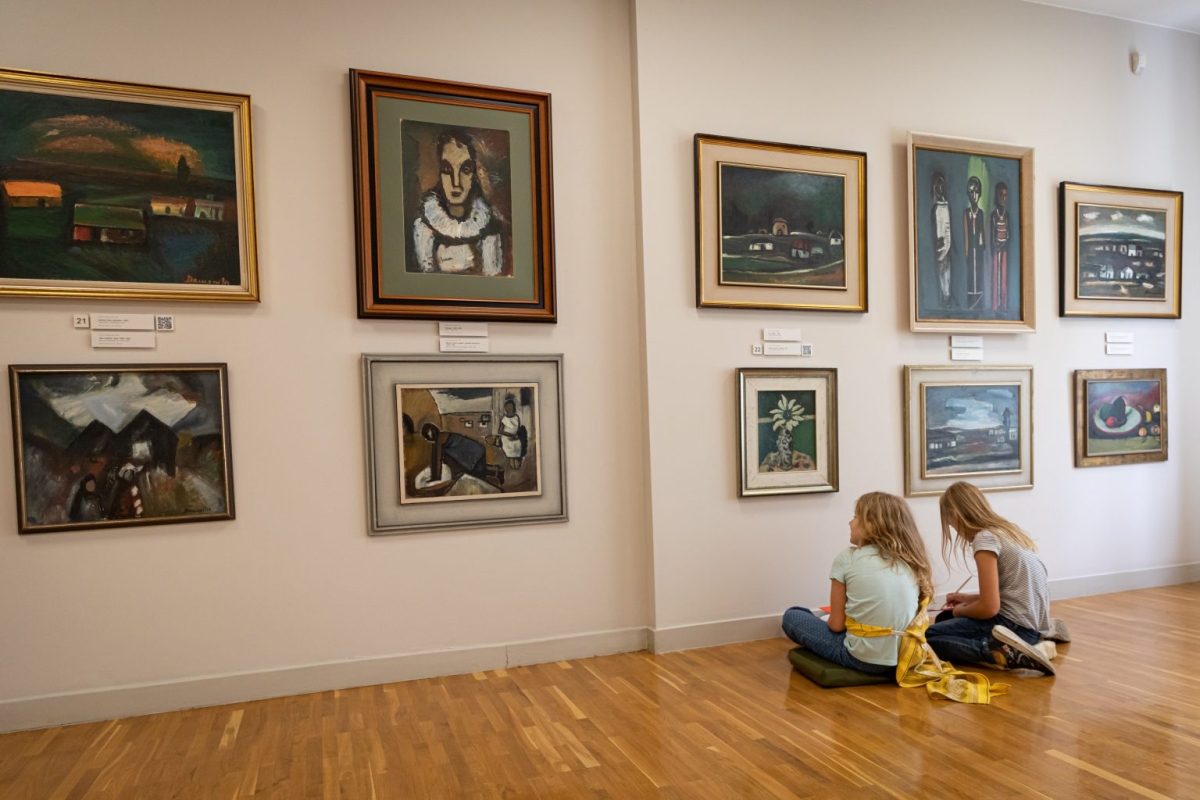
Pranas Domšaitis Gallery. Photo by Gintarė Grigėnaitė
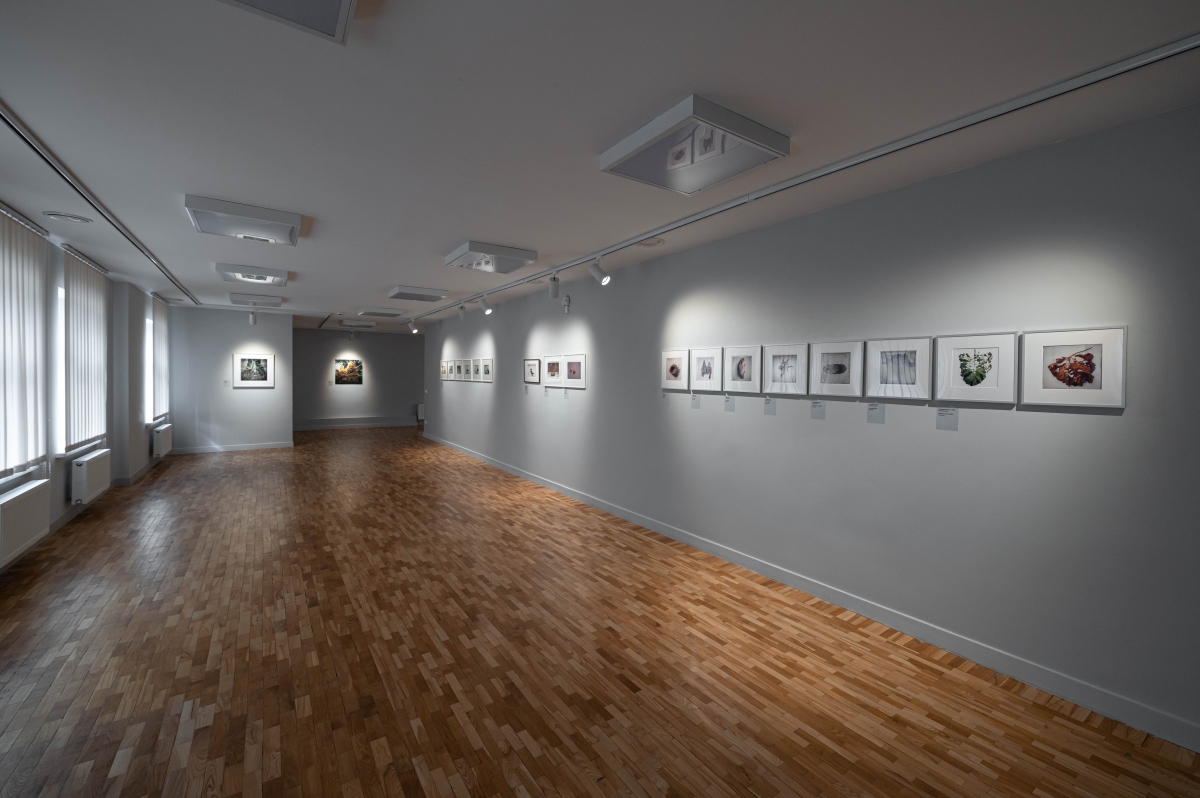
Alvydas Lukys ‘Ne tik šaknys. Pagal tėvo Juozo Lukio Sibire sukauptą archyvą‘ and ‘Ars Botanica‘, Pranas Domšaitis Gallery. Photo by Gintarė Grigėnaitė
AS: The Domšaitis Gallery has a unique trait: a pleasant, green, enclosed courtyard. Last year you initiated the outdoor exhibition ‘City Garden’, which presented different pieces by four artists. Are you planning to use this space in the future as well?
SM: The internal courtyards of the PDG are wonderful, but not very well known by the people of the town. We plan to continue inviting Klaipėda residents to these green areas for a cup of coffee or tea, to read the Lithuanian or English-language cultural press, or simply to let a child sleep in a pram, because there is a shortage of calm and quiet places in the city.
AS: Do you think the Domšaitis Gallery is important in the cultural life of Klaipėda? How would you position it in Lithuania?
SM: I will repeat that the Domšaitis Gallery is a branch of Lithuanian National Art Museum. There are four divisions of the museum in west Lithuania: the Clock and Watch Museum, Palanga’s Amber Museum, the Pamarys Gallery in Juodkrantė, and the Domšaitis Gallery. This department is undoubtedly important to Klaipėda and the western region, because there is no other museum or department with such a high profile. I am very happy and proud of my colleagues from the Lithuanian National Art Museum, and thank them for the opportunity to work together and create a modern museum.
AS: What is the cultural life in Klaipėda like? Is anything missing?
SM: Klaipėda is a strange city: you can feel both abroad, because there are higher standards, and on the periphery, at the same time. I would say it is a city of unfulfilled directions, goals and visions. So much has been prophesied and hoped for, but there is no breakthrough. The creative community has shrunk even more. There is a great shortage of professional artists, cultural managers, art researchers, educators, art pedagogues, and creative sector specialists. There is much room for action, but at the same time there are many obstacles to that action. You have to be patient, and that patience eventually turns into silvery hair over the years.
AS: Thank you for the conversation.
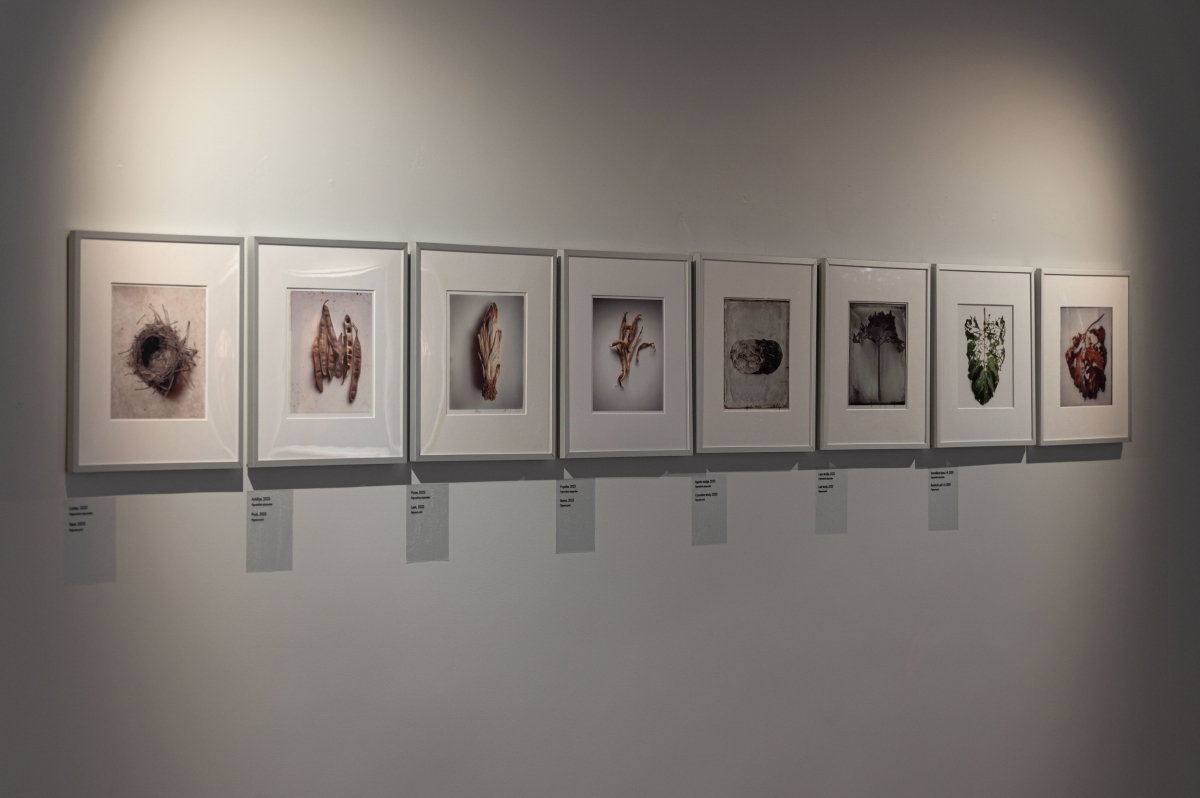
Alvydas Lukys ‘Ne tik šaknys. Pagal tėvo Juozo Lukio Sibire sukauptą archyvą‘ and ‘Ars Botanica‘, Pranas Domšaitis Gallery. Photo by Gintarė Grigėnaitė
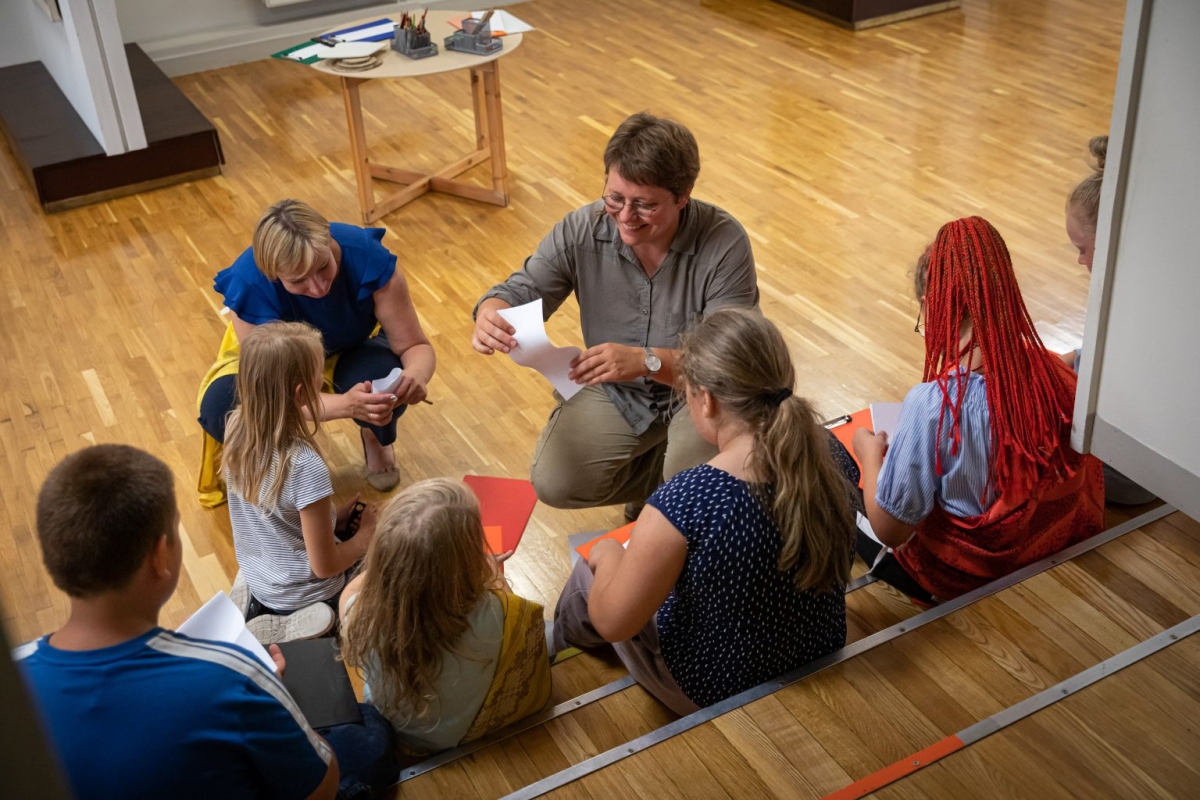
Pranas Domšaitis Gallery. Photo by Gintarė Grigėnaitė
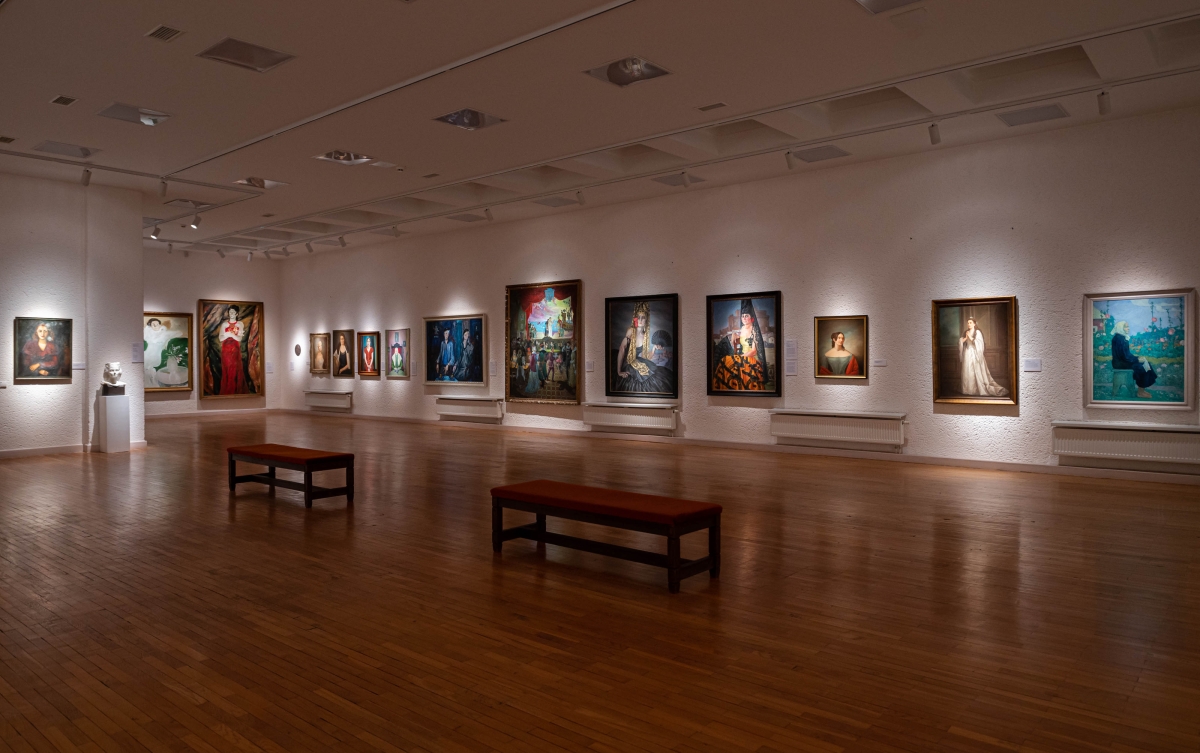
Exhibition ‘Paroda Scenos‘ curated by Ramutė Rachlevičiūtė, Pranas Domšaitis Gallery. Photo by Gintarė Grigėnaitė
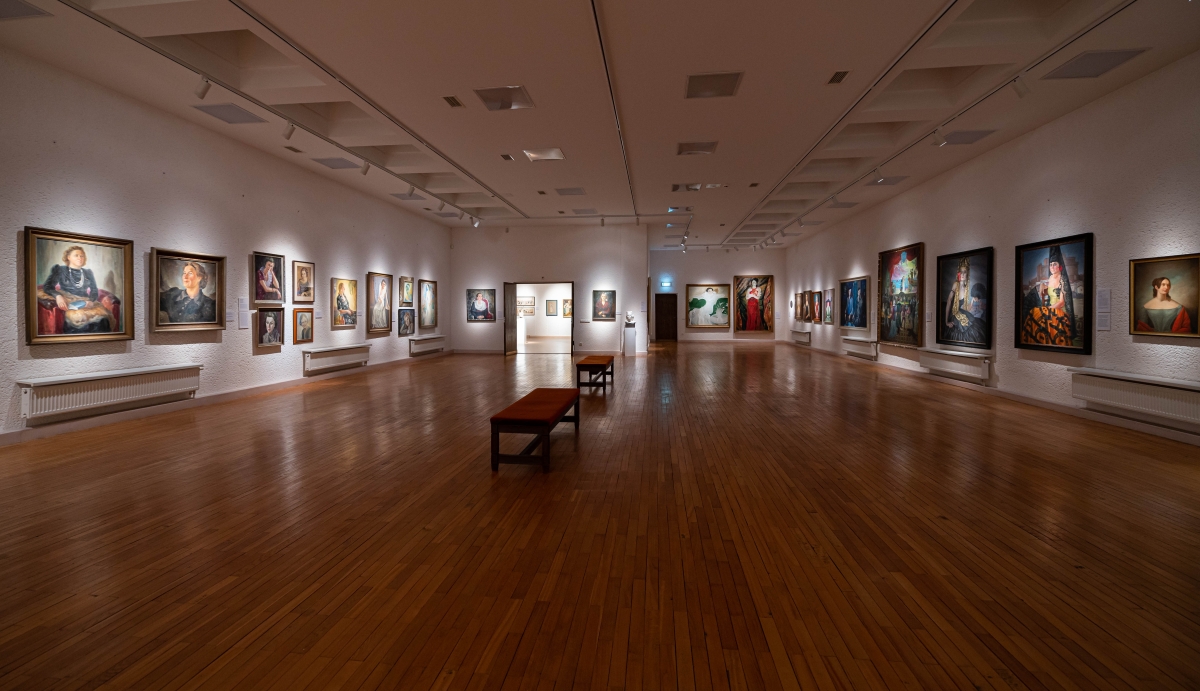
Exhibition ‘Paroda Scenos‘ curated by Ramutė Rachlevičiūtė, Pranas Domšaitis Gallery. Photo by Gintarė Grigėnaitė
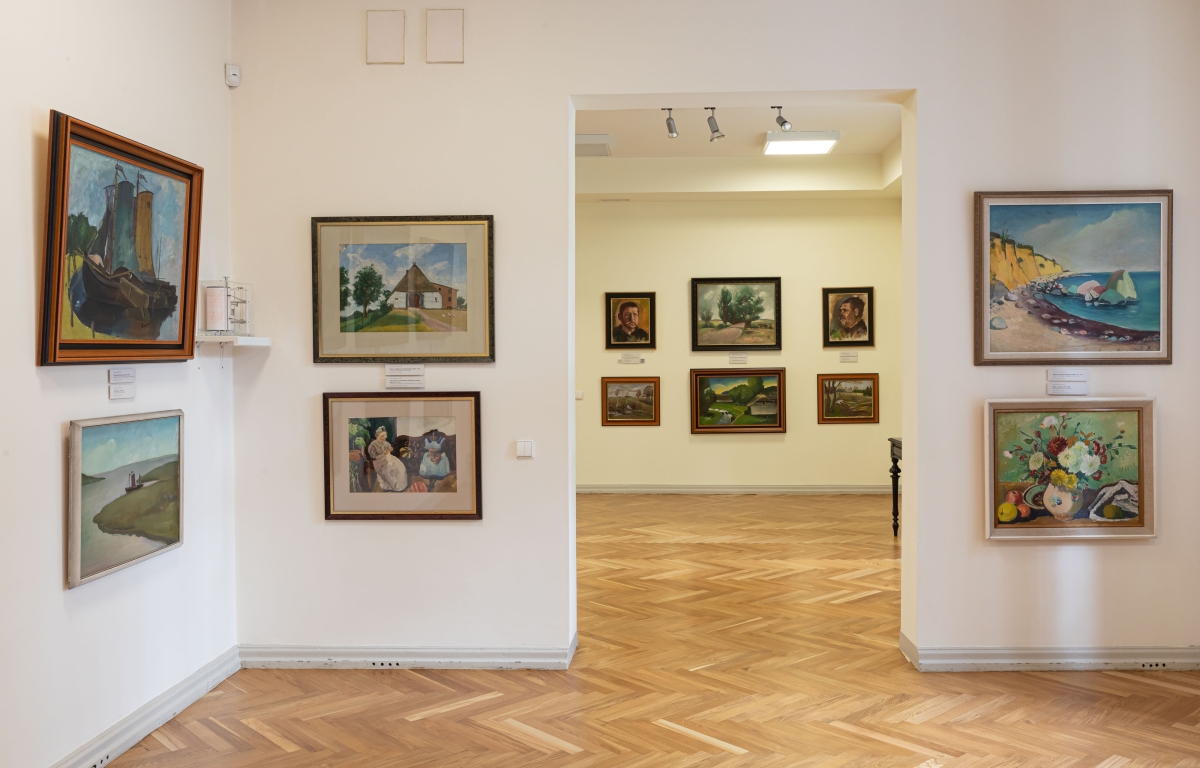
Pranas Domšaitis Gallery. Photo by Gintarė Grigėnaitė
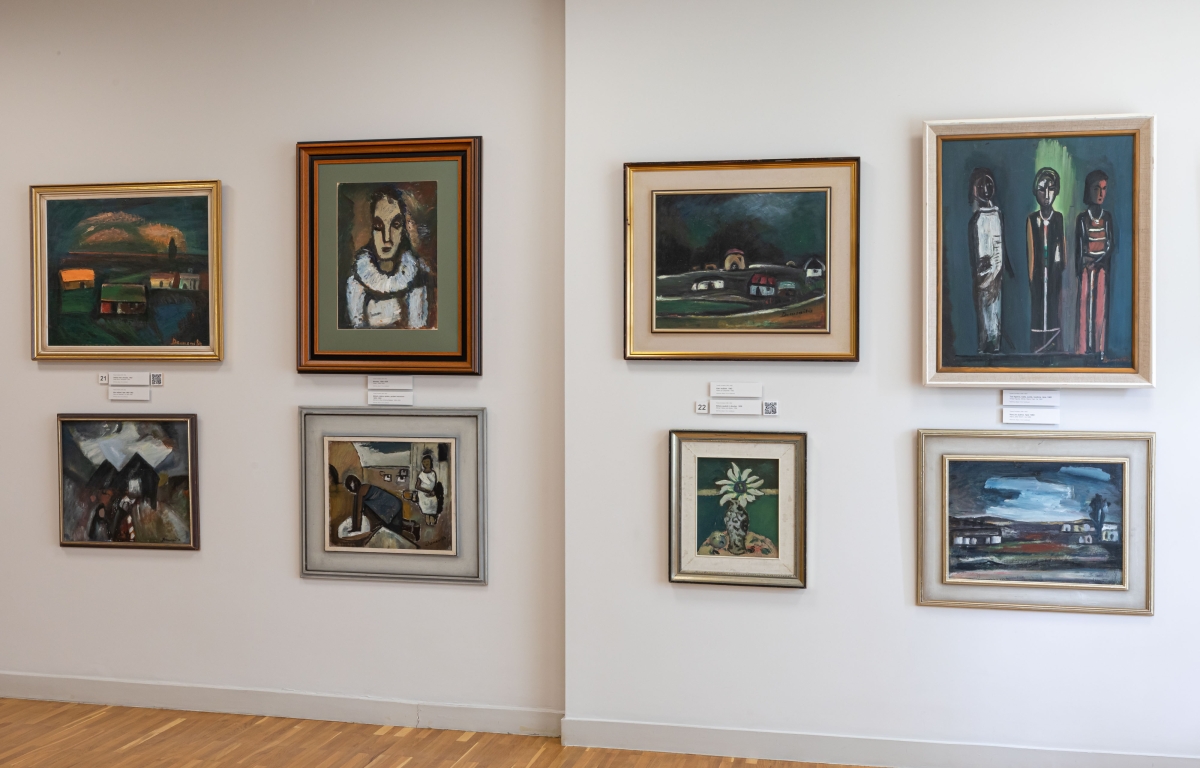
Pranas Domšaitis Gallery. Photo by Gintarė Grigėnaitė
